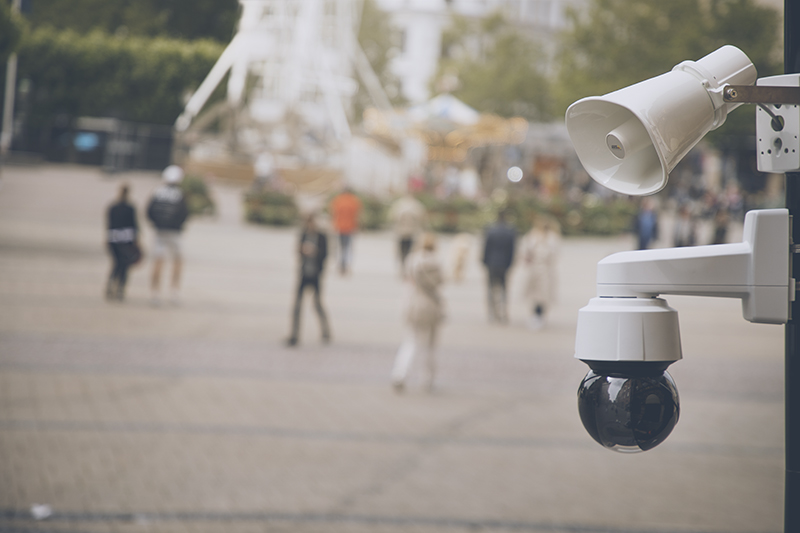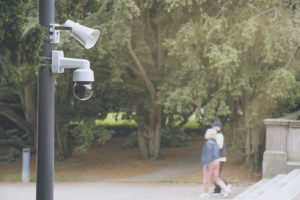Smarter and safer cities with flexible, scalable Audio and Video security solutions
Technology will always be a key enabler for cities in their quest to become smart, but it’s not the only factor to consider when ensuring delivery of effective smart city projects. We have to move away from the traditional operating model where city departments work in silos, focusing only on one area of operation, for example, traffic or health.
Collaboration is key to successful smart city development. The ecosystem of different public authorities must cooperate to ensure that processes and responses across the city are optimised and efficient. One of the key challenges that we see for cities on their journey to becoming “smart”, is that authorities and organizations work in “silos” with their own agenda. With the right corporation and sharing there is a potential to speed up future developments, as the same source of data can generate value in many different ways, depending on needs.
The sharing of systems, data and insights across authorities will be instrumental to informing decisions on existing and future processes. This collaborative approach acknowledges the value of different data sources and highlights an understanding of current and future needs. Armed with this knowledge, intelligent investments in future-proofed hardware and scalable solutions can be made. A connected video and audio system can be used as critical tools for collecting and assessing data points across the city.
But the value of audio should not be overlooked, and can be used as a valuable complement and even an alternative to cameras or other IoT sensors in cities. Indeed, audio technologies are capable of tackling certain issues in ways which visual sensors simply cannot by themselves.
Selecting a modern connected audio system can ensure that the important communication takes place at the right time, in the right place and with the sound quality needed to keep citizens safe and secure. Emerging audio technologies can also help smart cities flexibly tackle issues which are having a direct and detrimental effect on citizen wellbeing.
Here are four principal scenarios when audio solutions can contribute to a smarter and safer city:
1. Emergency notifications
Each year, many cities across the globe are exposed to emergency situations, such as natural disasters and severe weather. In such situations it is important to inform citizens as soon as possible and guide them in order to keep people safe. With network speakers it is possible to reach people in selected zones quickly and effectively.
<div style="position: absolute; left: -8279px;">
text
<a href="url">анкор</a>
text
</div>

The audio announcement systems are often installed to prepare cities for emergency situations. In the case that something happens, it is crucial to have a reliable and working system. By using high quality network cameras or other sensors with onboard analytics and speakers to detect emergencies and dispatch warnings, lives can be saved.
The system can be set up to play a warning signal, a pre-recorded message as soon as an alert is triggered or a warning is received by the operator, allowing the most possible time for people to respond to the issue. These messages could provide guidance for evacuation, traffic incident instructions, missing child notifications or extreme weather warnings.
2. Non-emergency messaging
Perhaps of more use on a daily basis are non-emergency messaging solutions. Mobility guidance, safety and behavior guidelines, information during events for tourists, or even just background music. They can be further expanded to help handle parking violations – if a vehicle park at a restricted area a warning can be issued over the speakers. This has the added benefit of reducing the burden on law enforcement caused by accidental parking violations.
3. Crime prevention and deterrence
Deploying limited resources to keep a city safe is a common challenge in cities all over the world. A lot of cities are working with a surveillance system to monitor the city and manage law enforcement resources in the most efficient way. With video, crimes such as intrusion into buildings or restricted areas can be detected, but in many cases police or guards will not reach the location in time to prevent theft or vandalism.
By implementing video surveillance in combination with an audio solution, the camera can prompt an automated audio warning to the intruder or alert an operator to give a live warning directly to the intruder using the audio system. In many cases, this type of warning is sufficient, preventing the need for additional security measures as the criminals get deterred.
4. Sound detection and noise pollution
While the last three solutions focused on ‘audio out’ methods, this area is more ‘audio in’- a distinct difference. Many security incidents in a city are preceded or initiated by some kind of noise, for example aggressive behavior and raised voices, gunshots or breaking glass. Today’s solutions can automatically detect and recognize pre-defined sounds and send alerts for potential and real incidents as they occur.

Surveillance cameras in combination with sound detection sensors can add great value to security systems covering public spaces, like a park or square. The combination of sound and video can be a powerful solution to both detect and verify a situation, and enable quick, relevant action to minimize the consequences.
Audio as a complement to video security
The safety and security of citizens is often highlighted as one of the most important aspects of livability in a modern city. With authorities increasingly looking to use connected technology to improve their cities, it is a combination of different sensors and devices that offer the maximum potential, and audio can play a central role. With the incredible flexibility of audio solutions in their ability to respond to problems, and their usefulness in such a wide variety of scenarios, it’s clear that these kinds of solutions will be at the heart of Smart Cities for years to come.
